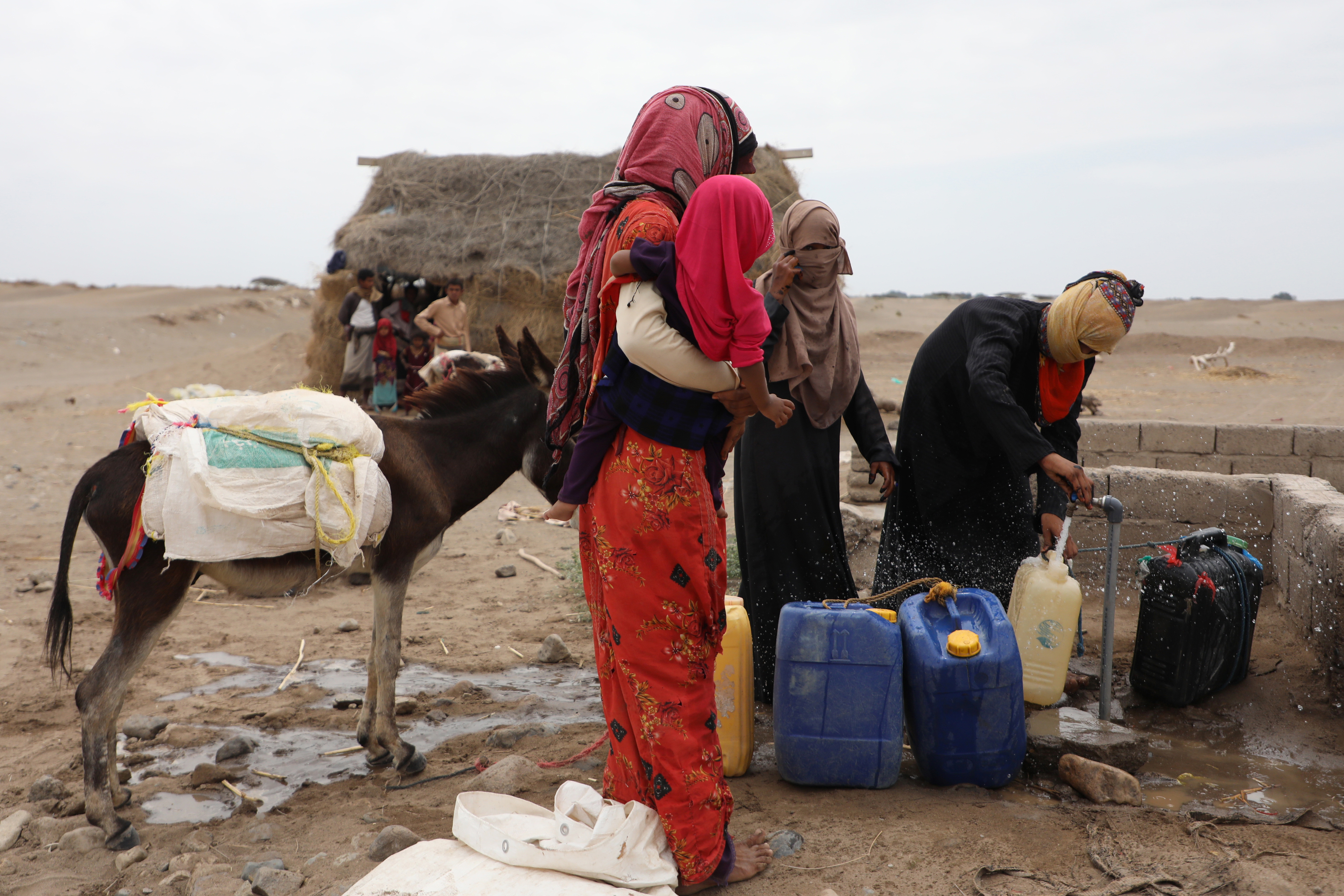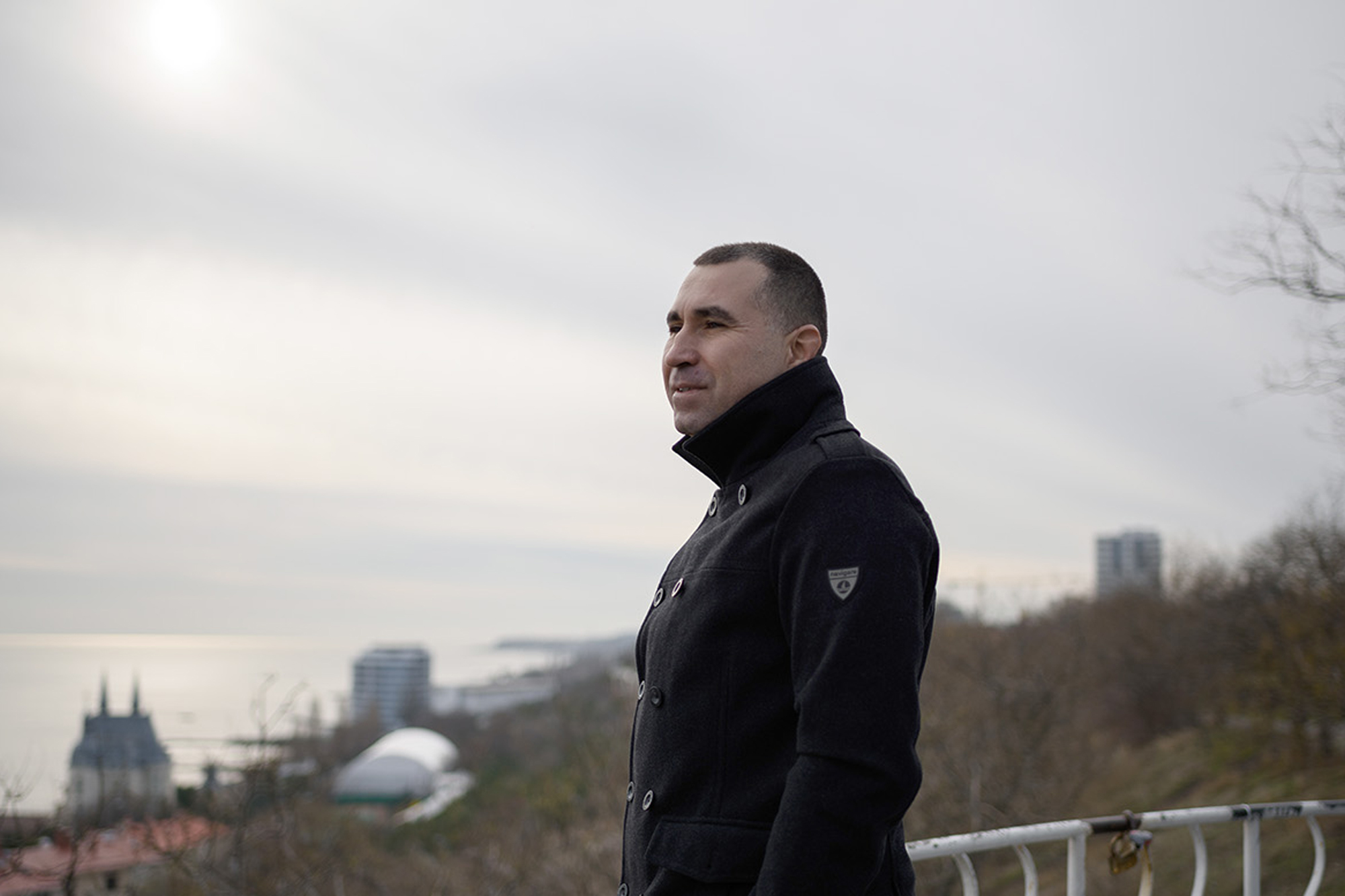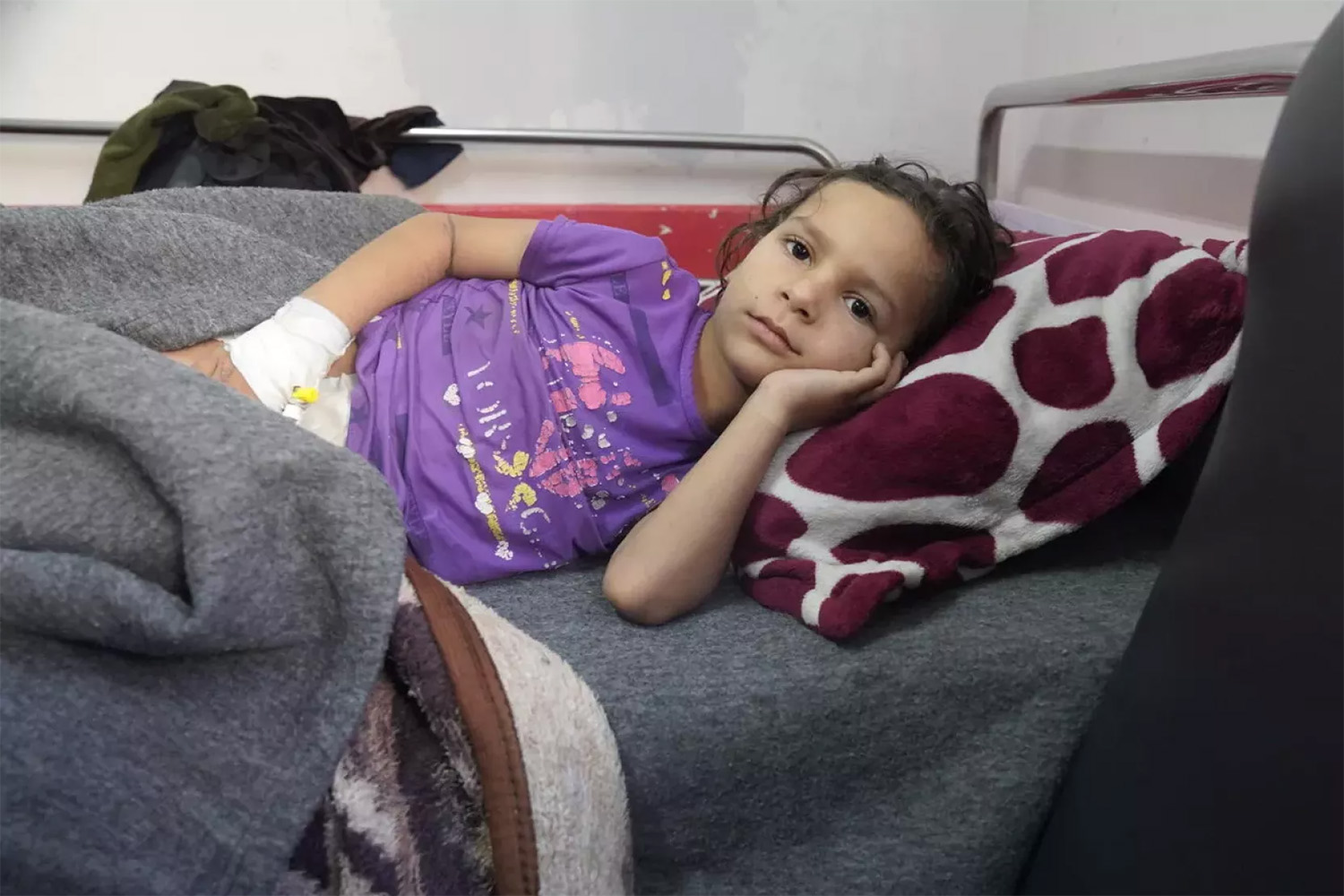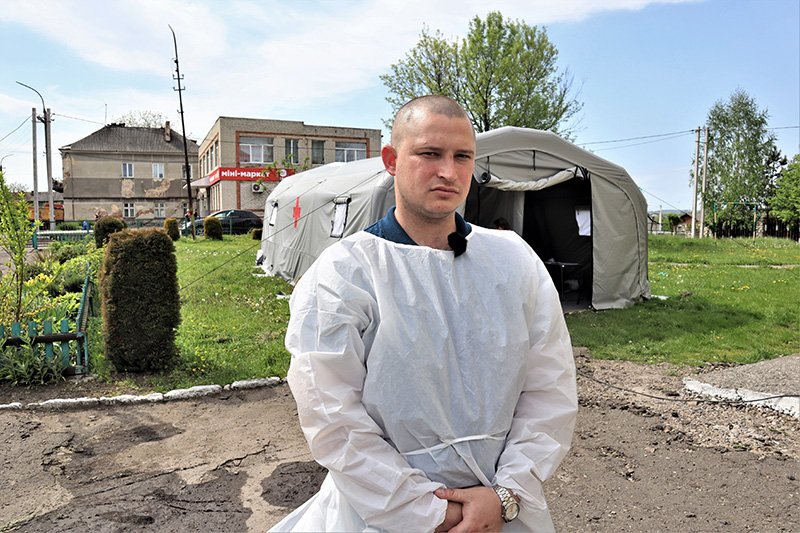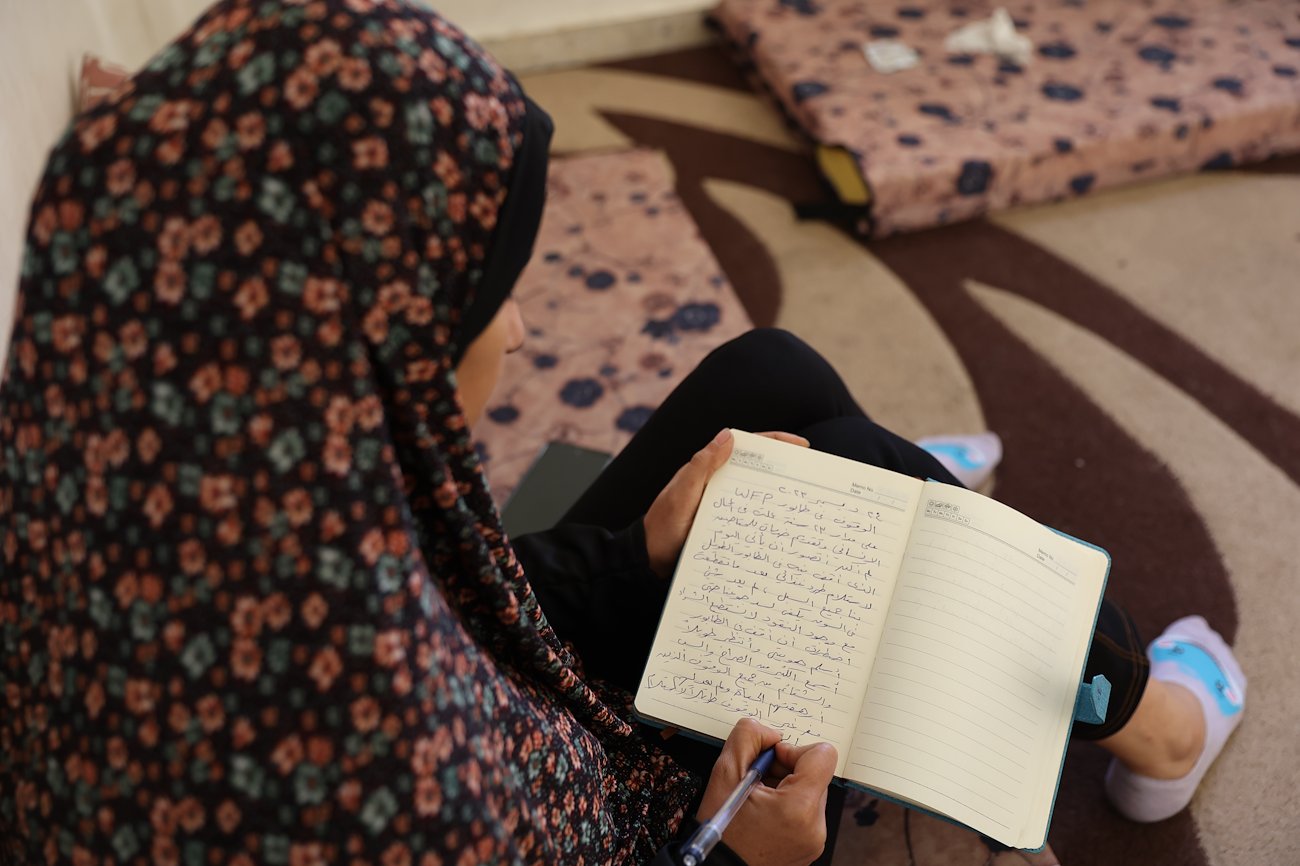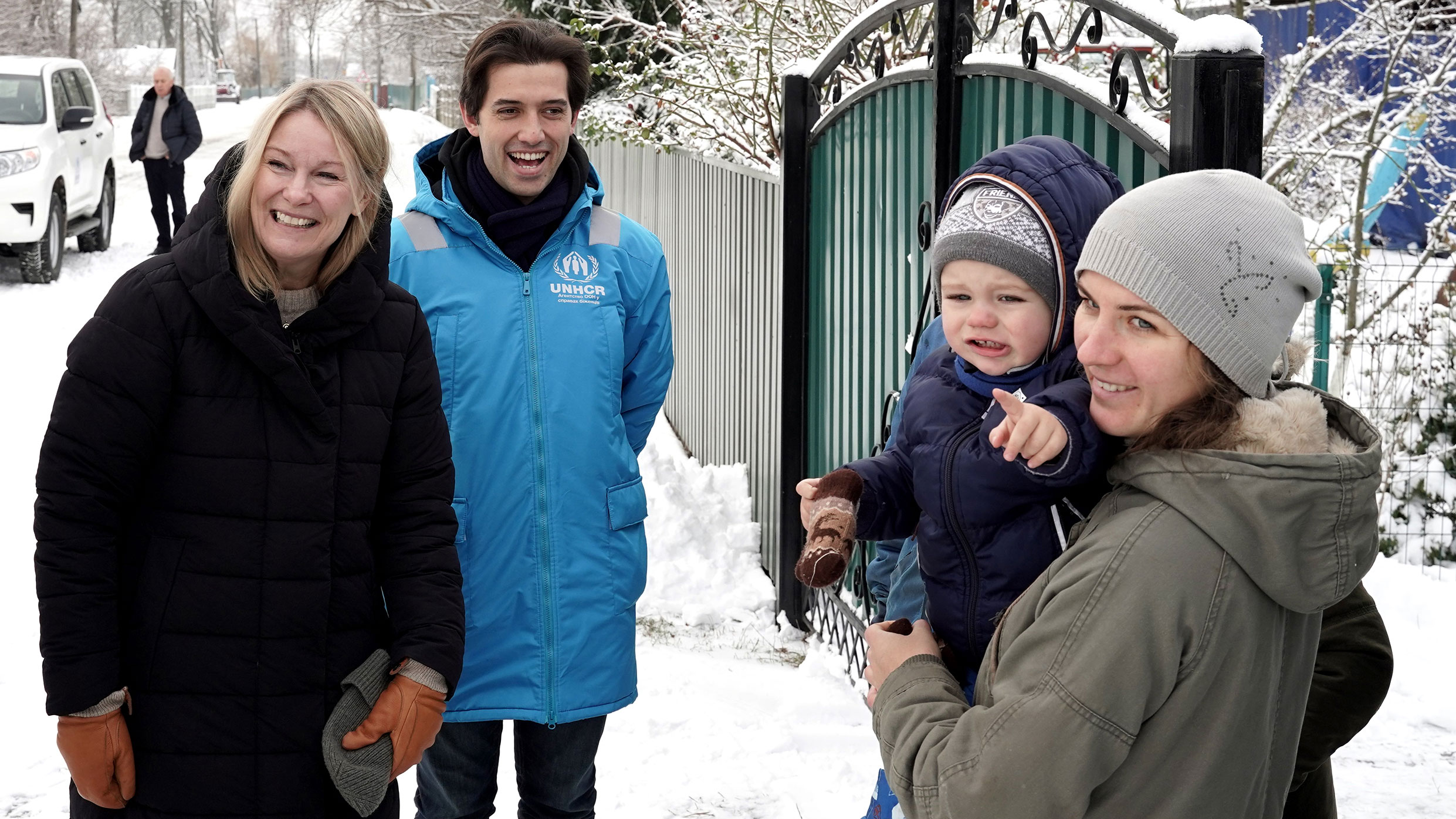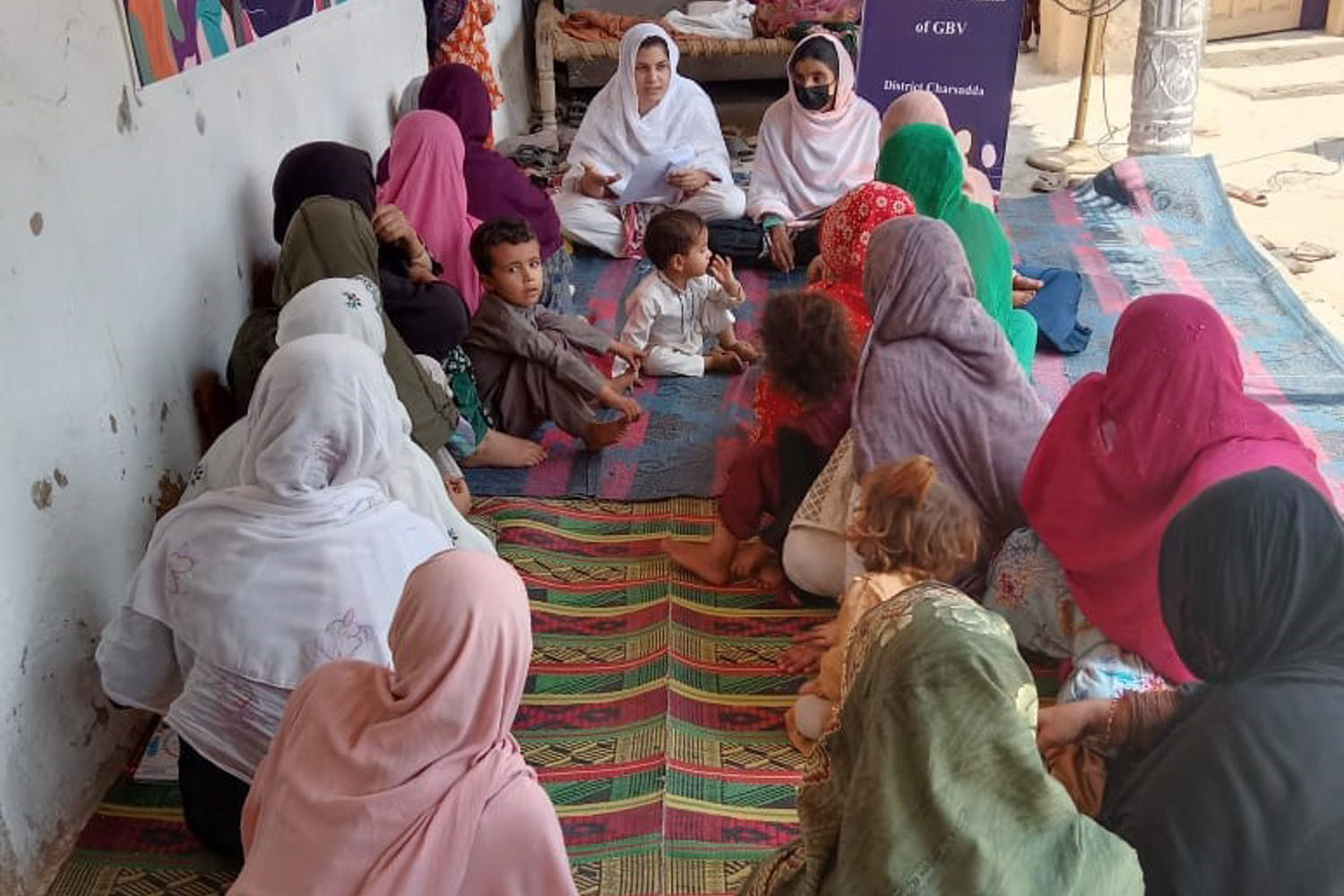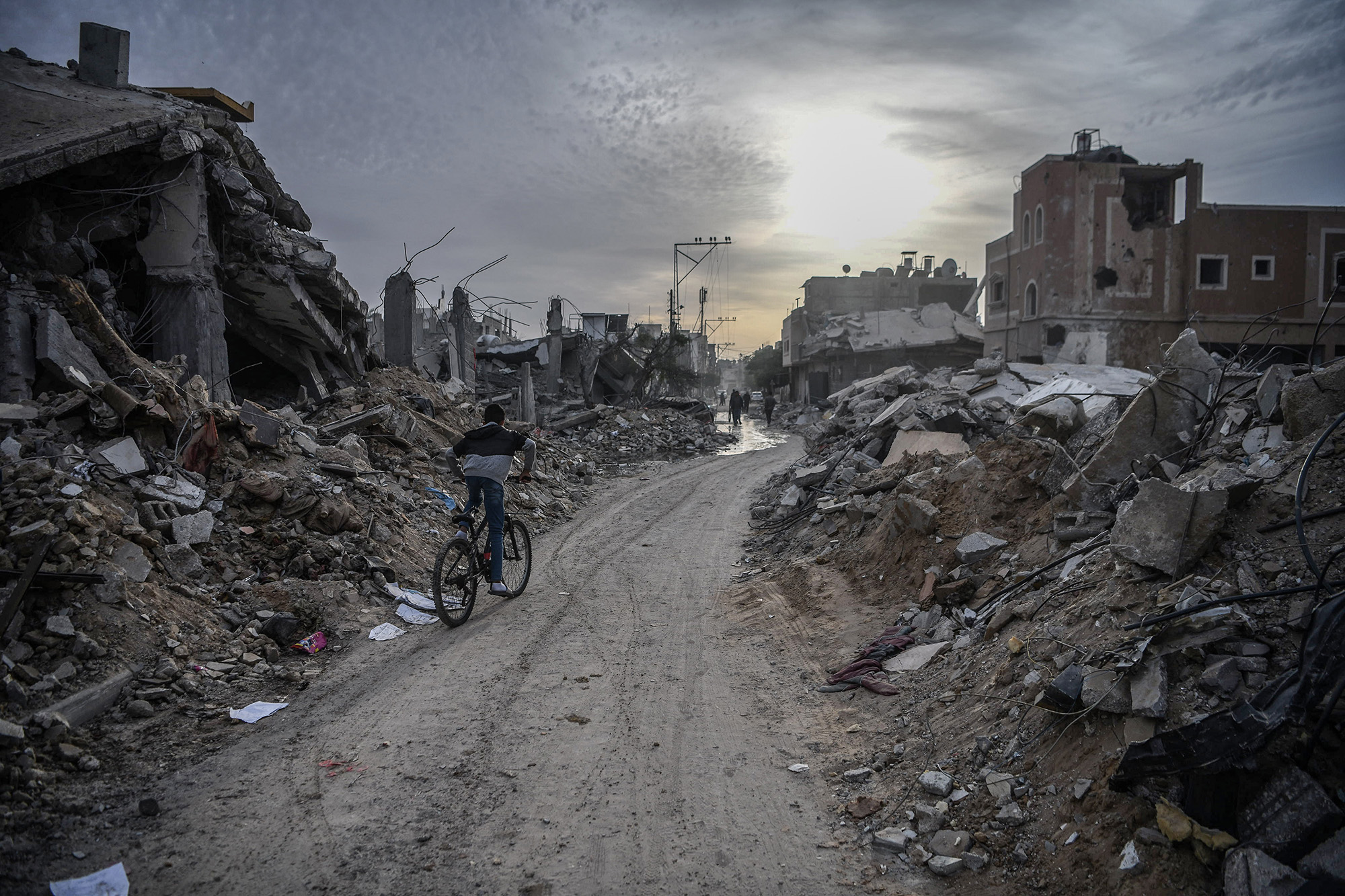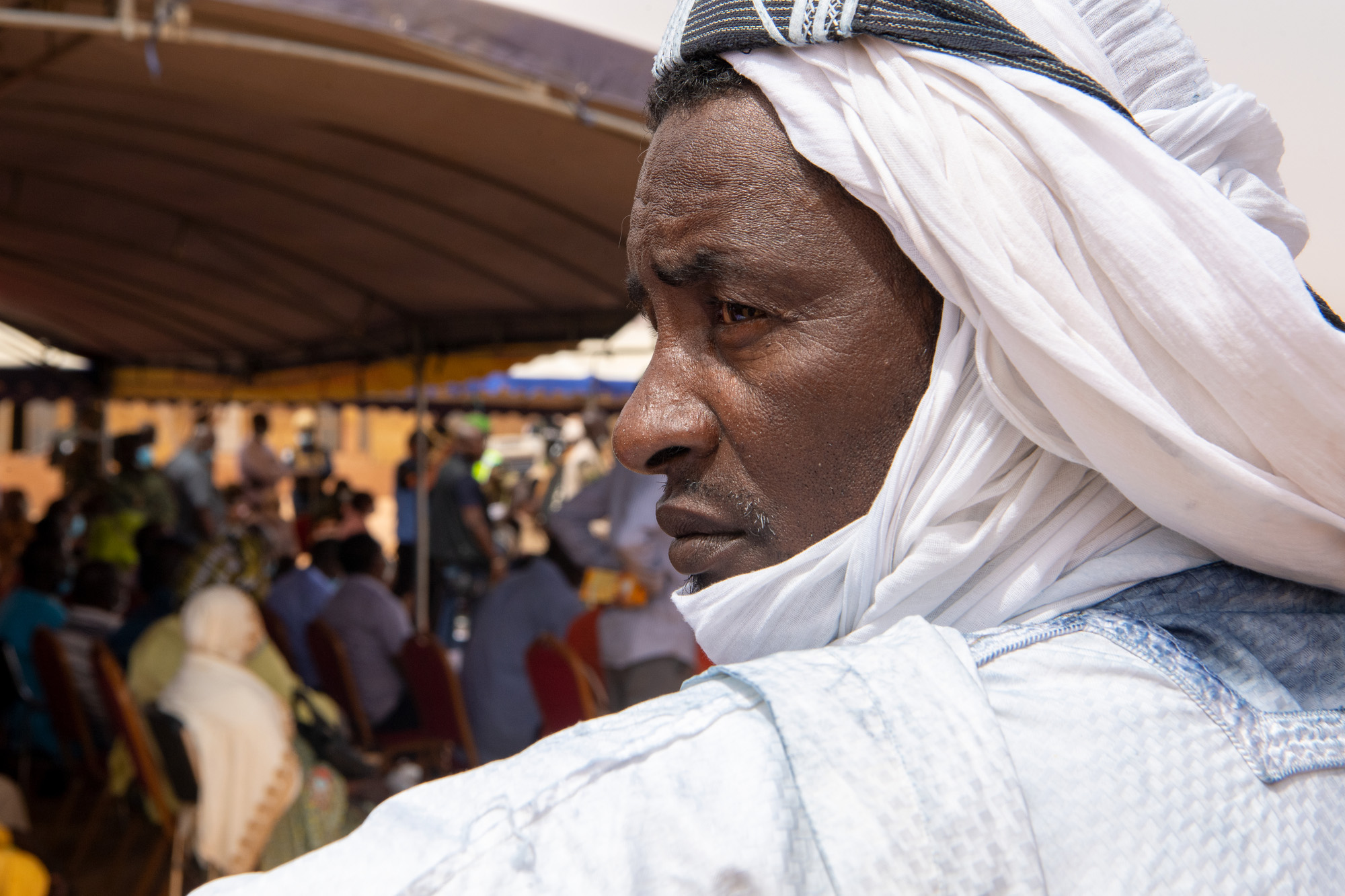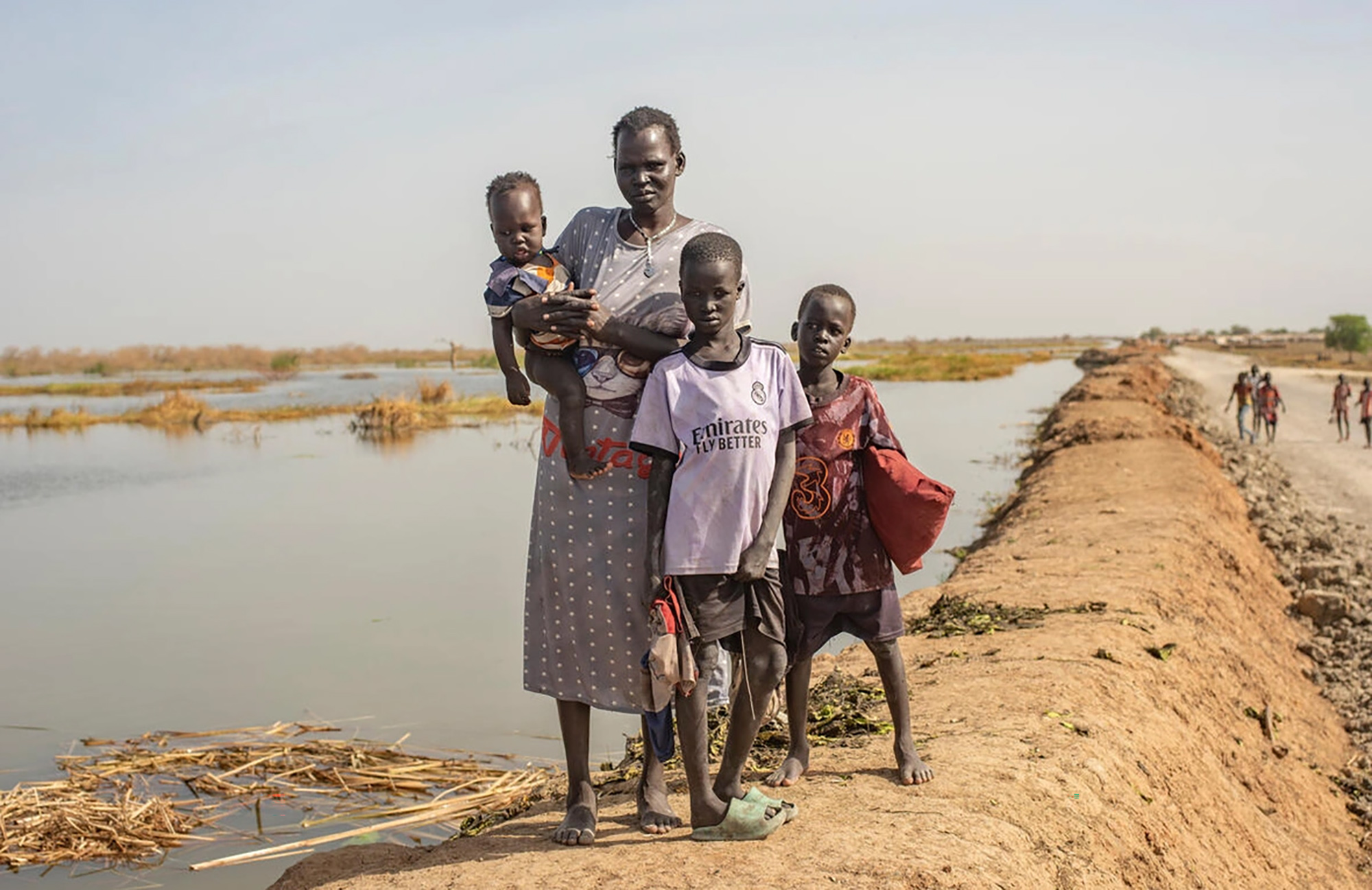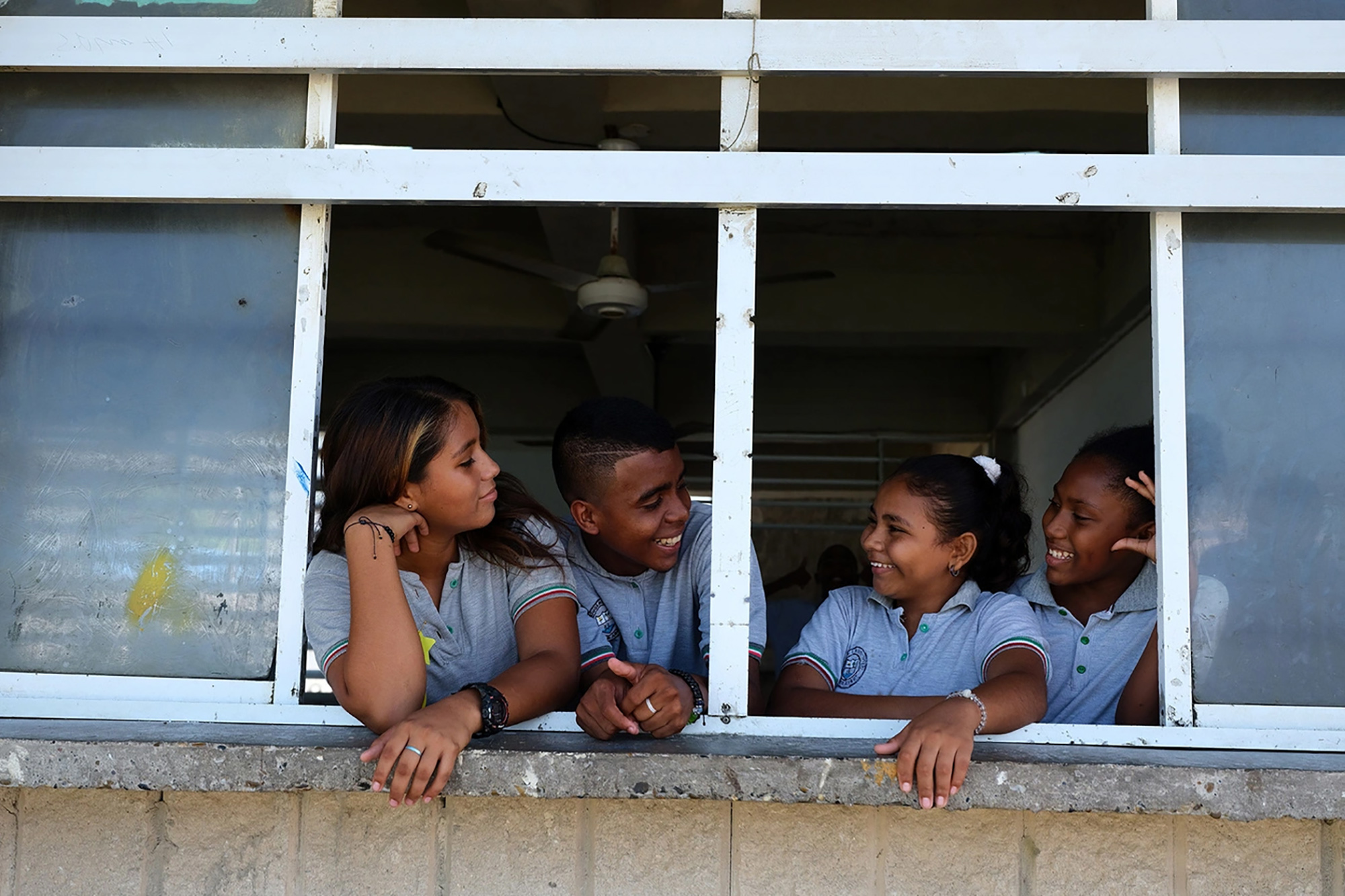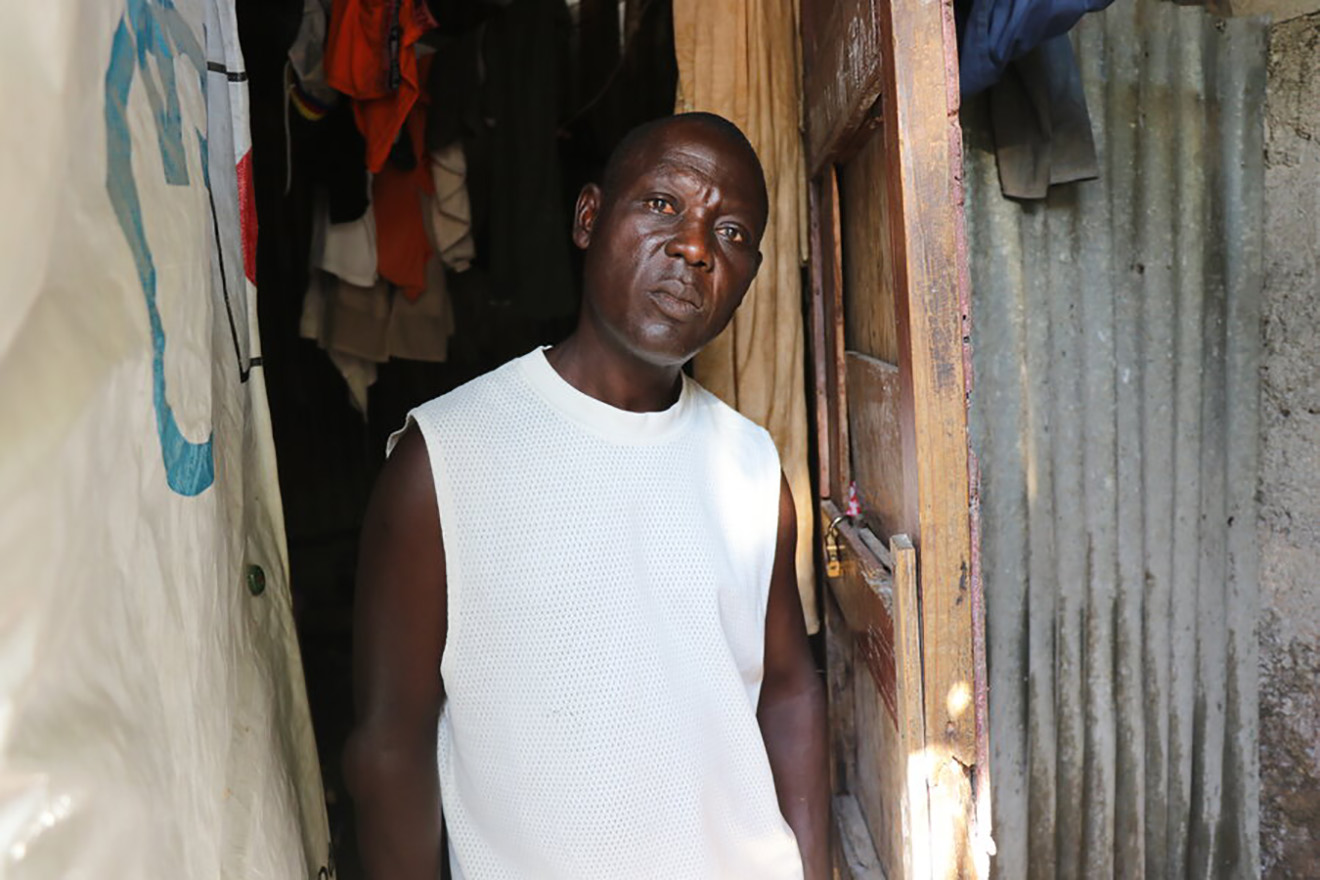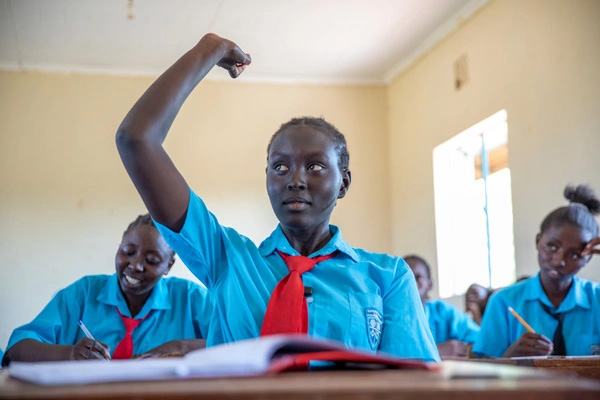Amidst Yemen's conflict, community-led water projects are revitalizing communities and providing essential access to clean water, transforming lives and easing burdens for millions.
Displaced Persons and Refugees
Due to Russia's invasion of Ukraine, Svetlana and her family had to leave their home in Odessa and seek refuge in the coastal town of Zatoka. When the bridge across the Dniester Estuary was attacked, they decided that Svetlana had to take the children to Moldova while her husband Ruslan stayed behind due to martial law. They have now been separated for 20 months and share how they maintain their family life and love across the border.Throughout Ukraine and neighboring countries, the United Nations Population Fund's (UNFPA) Safe Spaces provide expert psychosocial support to people coping with the effects of war and displacement.
Months of escalating conflict have turned the Gaza Strip into the most dangerous place in the world to be a child. Every child across Gaza has been exposed to deeply distressing events, witnessing horrors that no child should. Around 1.7 million people are estimated to have been internally displaced by the violence, half of them children. Families desperately searching for shelter are being pushed into tiny, overcrowded areas without adequate water, food, or protection. The little food that is available isn’t enough to meet children’s nutritional needs. As a result, thousands of children are malnourished and sick. The lasting impact of this violence will be felt for generations to come.
“Missiles hit the perinatal centre, the maternity ward – everything,” remembers Maksym, a doctor from Mariupol. “They fired directly at the windows: we saw pieces of human bodies flying out.” Immediately after the February 2022 Russian invasion of Ukraine, Maksym began treating patients in the basement of a gymnasium that had been turned into a makeshift hospital catering to the needs of the 4,000 people sheltering there. For them, Maksym was a pediatrician, surgeon, nurse, and psychologist combined in one, working for 14 hours per day or more. Read more about Maksym and others in the war-affected communities that the International Organization for Migration (IOM) is helping.
Following the Türkiye and Syria earthquakes, the number of child-headed households surged, prompting initiatives like AHF's family reunion programme to address the needs of these vulnerable households.
The conflict that began on October 7 has not only displaced Hala, a mother of four and humanitarian worker from Gaza, but has also resulted in over 22,000 casualties, nearly 2 million displacements.
"Volunteers from all areas of society have helped people who have been directly impacted by the war. They're cooking meals, giving clothing, giving money, opening their homes."
Karolina Lindholm Billing was posted to Ukraine less than a year before the full-scale Russian invasion. As the UNHCR Representative in the country, she draws hope from witnessing the power of community volunteer networks in supporting displaced people in their hour of need.
In this episode, Karolina reflects on Ukrainian resilience, the drive to rebuild, and why people long to stay in their own homes, even in a war zone.
“What I’ve seen so clearly during these last 600 plus days of the war in Ukraine, is how quickly people want to recover…So when we can be a little enabler of that recovery, I think that feels meaningful”
Photo: ©UNHCR/Oleksii Barkov
Investing in Afghan women and girls’ menstrual health, preserves their dignity, whose vulnerabilities are exacerbated by displacement and risks of gender-based violence.
Fighting has resumed in Gaza after a temporary humanitarian truce that allowed desperately needed assistance to reach people displaced by the war. The temporary halt provided some respite for residents who endured constant shelling, repeated displacement and sleepless nights. One of them is Asmaa Marouf. A UN Volunteer, Asmaa was working as a geographic information systems specialist with the United Nations Development Programme (UNDP). When the war began, she was forced to flee her home along with her children. Asmaa shares her experience, her fears, her hopes and her belief that the current war is different from the previous escalations she has lived through. Her words underscore the need for a full humanitarian ceasefire.
Honoring individuals, groups and organizations who excel in protecting refugees, displaced and stateless people is the main mission of the Nansen Refugee Award given out by the UN Refugee Agency. Established in 1954, the award celebrates the legacy of Fridtjof Nansen, a Norwegian scientist, polar explorer, diplomat and first High Commissioner for Refugees for the League of Nations. Since then, more than 60 individuals, groups or organizations have received the prize for their service to refugees. The 2023 Global Laureate is Abdullahi Mire, a journalist and former refugee from Somalia.
The climate crisis and human displacement are increasingly linked. Not only did climate-related disasters cause more than half of all new displacements reported in 2022, but nearly 60 percent of refugees and internally displaced people now live in countries that are among the most vulnerable to climate change. Our understanding of these connections is growing, but the ways in which our rapidly changing climate is forcing people to move and making life harder for those already displaced, are complex and evolving. This situation has led to a proliferation of myths and disinformation. Here are five of the most common myths related to the climate crisis and displacement, followed by what the UN Refugee Agency knows.
A funding crunch has sharply curtailed WFP’s response to two top hunger crises: Somalia and Haiti. WFP spoke with Hibo Ahmed, who has survived on WFP cash assistance programmes at a dusty camp for internally displaced people, and Herman Petitfrere who, after fleeing gang violence in the neighborhood where he lived, in Haiti’s capital, Port-au-Prince, now lives in a makeshift shelter built from wood and iron sheeting, located in a camp, where hundreds of other people have also taken refuge. Both are surviving day-to-day in homelands roiled by violence and climate change — which together help to drive some of the world’s highest hunger rates.
UNRWA met with Malak, a Palestinian refugee in Jenin, who shared her memories of her cousin Sadeel. Sadeel was killed following an Israeli Security Forces operation in Jenin camp. Malak wants to become a doctor, be happy and live safely.
While armed conflicts, rising food insecurity, and the climate emergency have pushed displaced people around the world to the brink, refugees are finding ways to contribute to their host communities, as educators, entrepreneurs, advocates, climate activists and health-care workers, among others. During the upcoming Global Refugee Forum, an opportunity to mobilize action for positive change in the lives of refugees will be appreciated as the 17 goals collectively known as the Sustainable Development Goals cannot be fully realized without their inclusion. Being a refugee is not a handicap and they are living proof that their power of perseverance is towards a better future no matter the obstacles that stand in their way.

